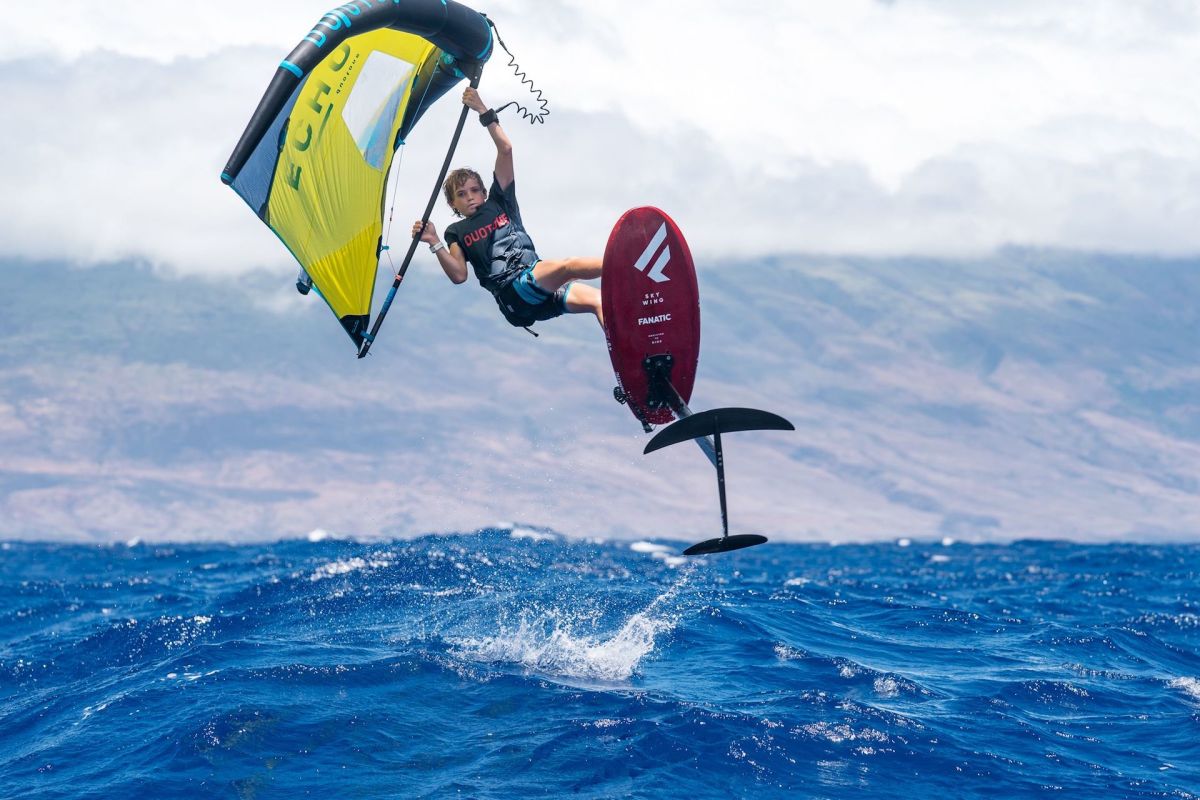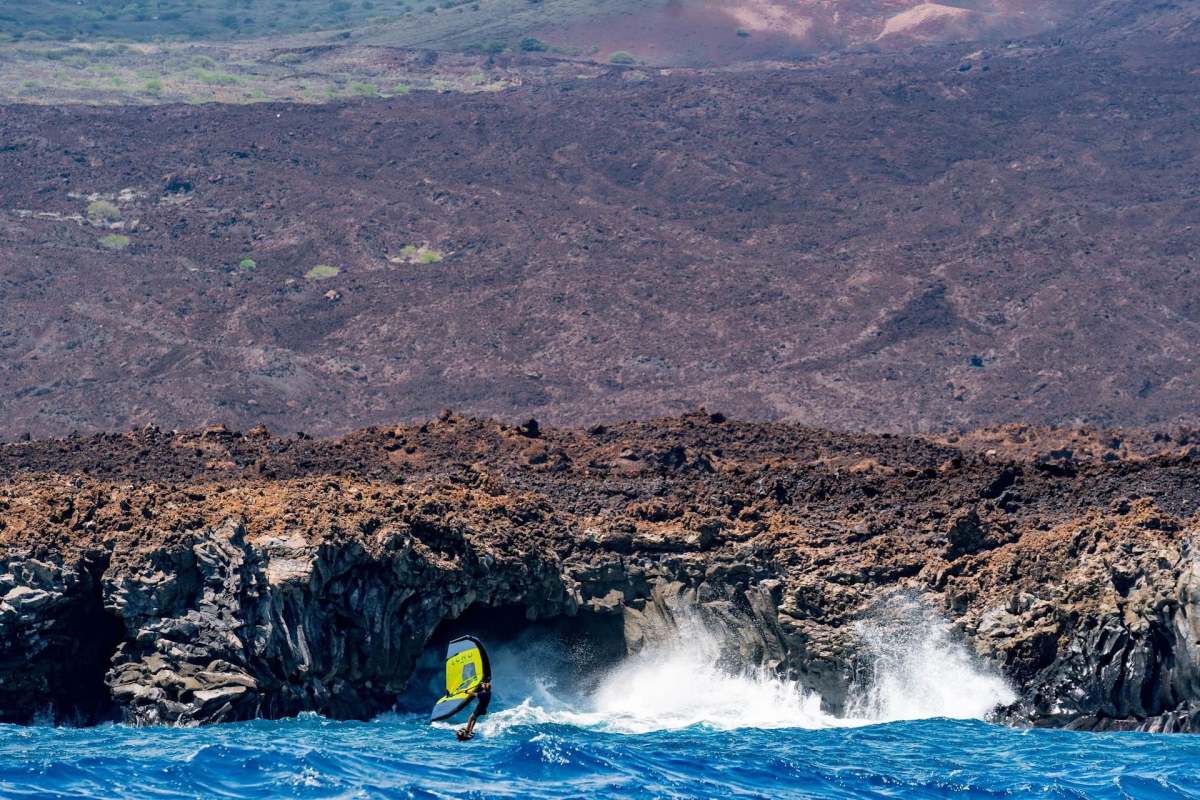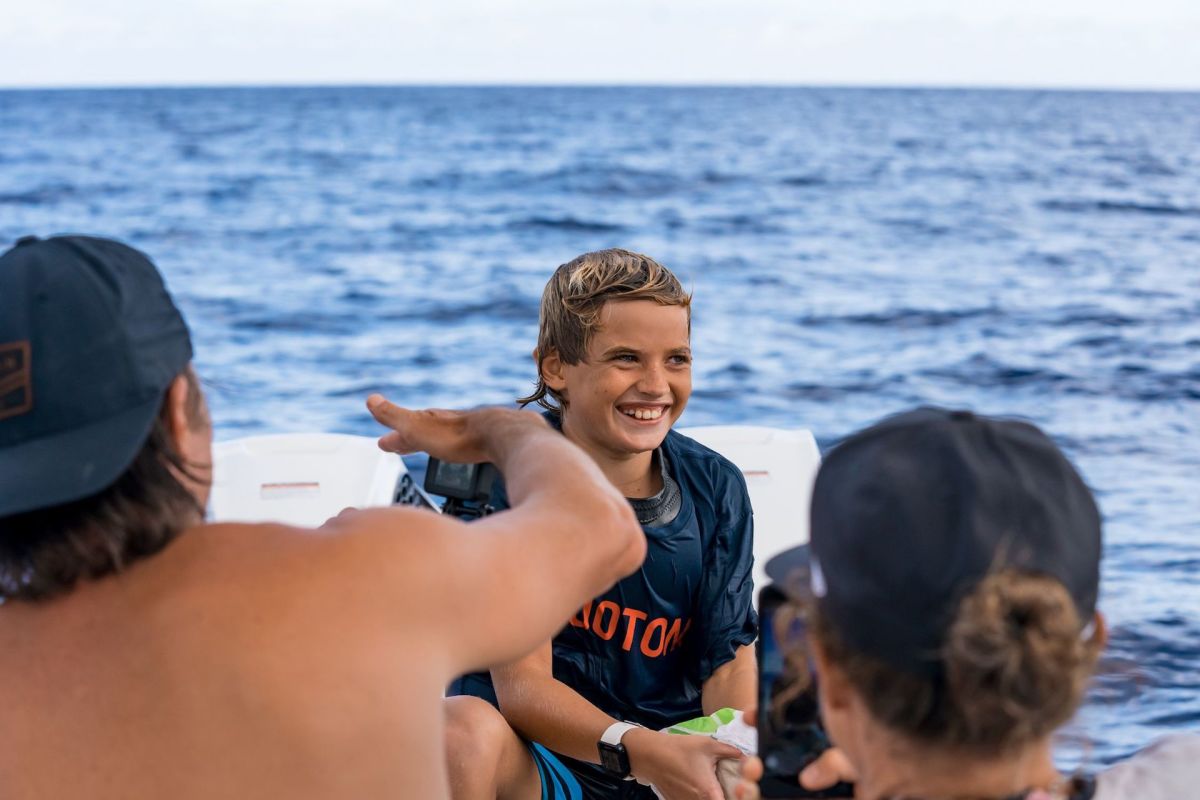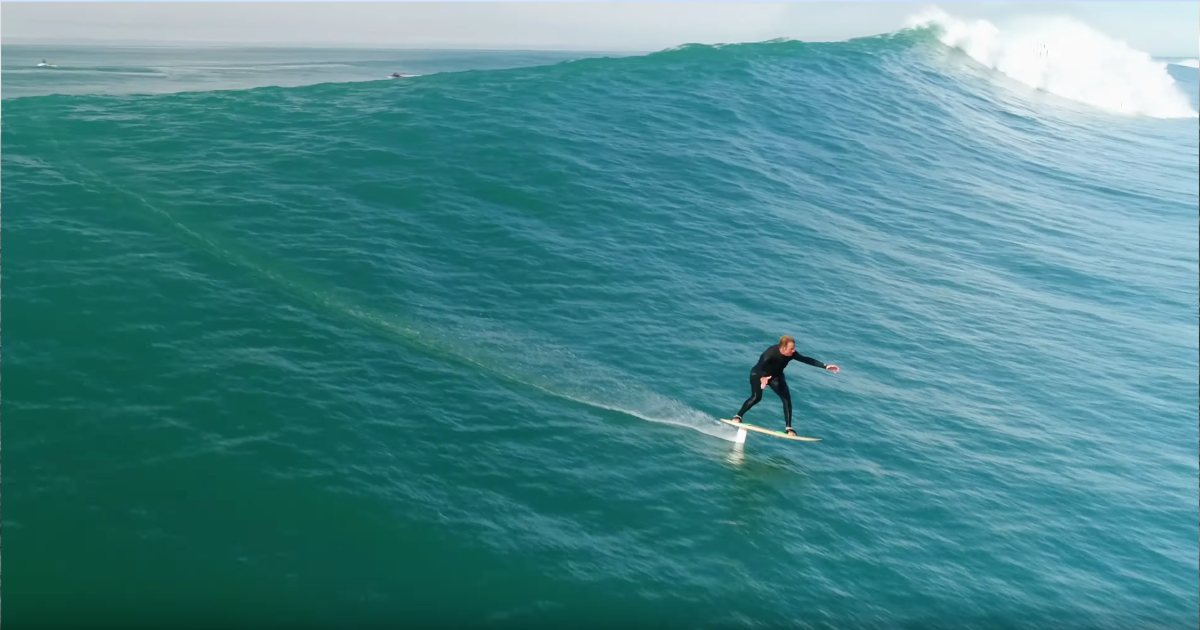While Hawaii has been on coronavirus lockdown, its athletes have been pushing the boundaries of ocean sports. Flip through the Instagram feeds of Maui’s top watermen and women and you’ll see their toy of choice is the wing foil, which consists of a hand-held kite wing and a foil board (that is, a surfboard mounted on a hydrofoil that extends below the water). On August 6, 11-year-old Maui phenom Anderson Ellis Kainalu Gallagher, better known as Bobo, became the first, as well as the youngest person, to cross the Alenuihaha Channel from Hawaii to Maui using just a wing and a foil board.
Gallagher says his inspiration was Maui waterman Kai Lenny, who was the first to make the daunting 49-mile crossing on a hydrofoil, sans wing, in 2017. Lenny has crossed all of the channels of the Hawaiian islands and while each poses its own unique set of challenges, he says the Alenuihaha is by far the most treacherous. Considered one of the world’s most dangerous channels, it plunges to a depth of 6,100 feet and is known for its massive ocean swells, powerful currents and heavy trade winds that funnel between the island high points of Haleakala and Mauna Kea. “The current in the other channels may take you to another island, but this one will flush you out to the Great Pacific,” says Lenny, who was recently named Red Bull’s Male Performer of the Year.

Like Lenny, Gallagher has set out to master all ocean sports. He’s been channel crossing since the age of 9 and started training to cross the Alenuihaha last September. While only wing-foiling for one year, he’s excelled at the sport with the help of Maui coach Suzie Cooney and legendary watermen, including Archie Kalepa. “Winging has totally become the thing on Maui,” he says. “It’s this weird combination between kiting and windsurfing. It’s less physical and the wing is way easier to maneuver.”
In preparation, Gallagher estimates he made around 100 downwinders on the Maliko Run, an infamous 10-mile stretch of water on Maui’s North Shore. He also prepared a PowerPoint presentation of his crossing strategy for his family and mentors. Gallagher assembled a crew that included a boat pilot, boat captain and safety support. The holding period for the Alenuihaha started the first week of August. And when the conditions aligned on August 6, he set out from Upolu Point on the island of Hawaii.

With wind speeds reaching 25 miles per hour and swells of 10-plus feet, Gallagher estimates he was cruising at 30 mph. “In the beginning, the safety boat couldn’t keep up with me,” he says. “I kept thinking, ‘Guys can you step on it, please.’” He made it into Maui’s La Perouse Bay in 4 hours and 6 minutes, hands covered in blisters, but still smiling. “I think I could have done it in two hours if the boat could have gone faster,” he says. Gallagher used the crossing to raise money for Charity: Water, a nonprofit organization that focuses on bringing safe drinking water to developing countries. “I also want to show people that age shouldn’t be a barrier,” says the soon-to-be fifth grader. “It should be the reason why we do things, not an excuse for why we can’t.”

Lenny says he had no doubt that Gallagher would succeed. “He has so much skill and he’s been training,” he says. “To be honest, I thought it would be too easy for him.” Lenny made history in 2018 when he foiled the 32-mile Kaiwi Channel between Molokai and Oahu in 2 hours and 52 minutes, shattering the record by an hour. In July, Lenny and Oahu waterman John John Florence sailed across the Kauai Channel—Hawaii’s longest channel—on an 18-foot hydro-foiling catamaran.
“People have been crossing the channels for generations,” says Lenny. “Now it’s all about how fast you can cross, who can do it first, and what new piece of equipment you can do it on or in.”
from Men's Journal https://ift.tt/32QR86c



No comments:
Post a Comment